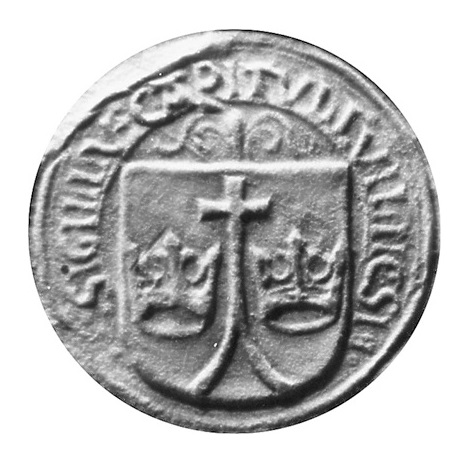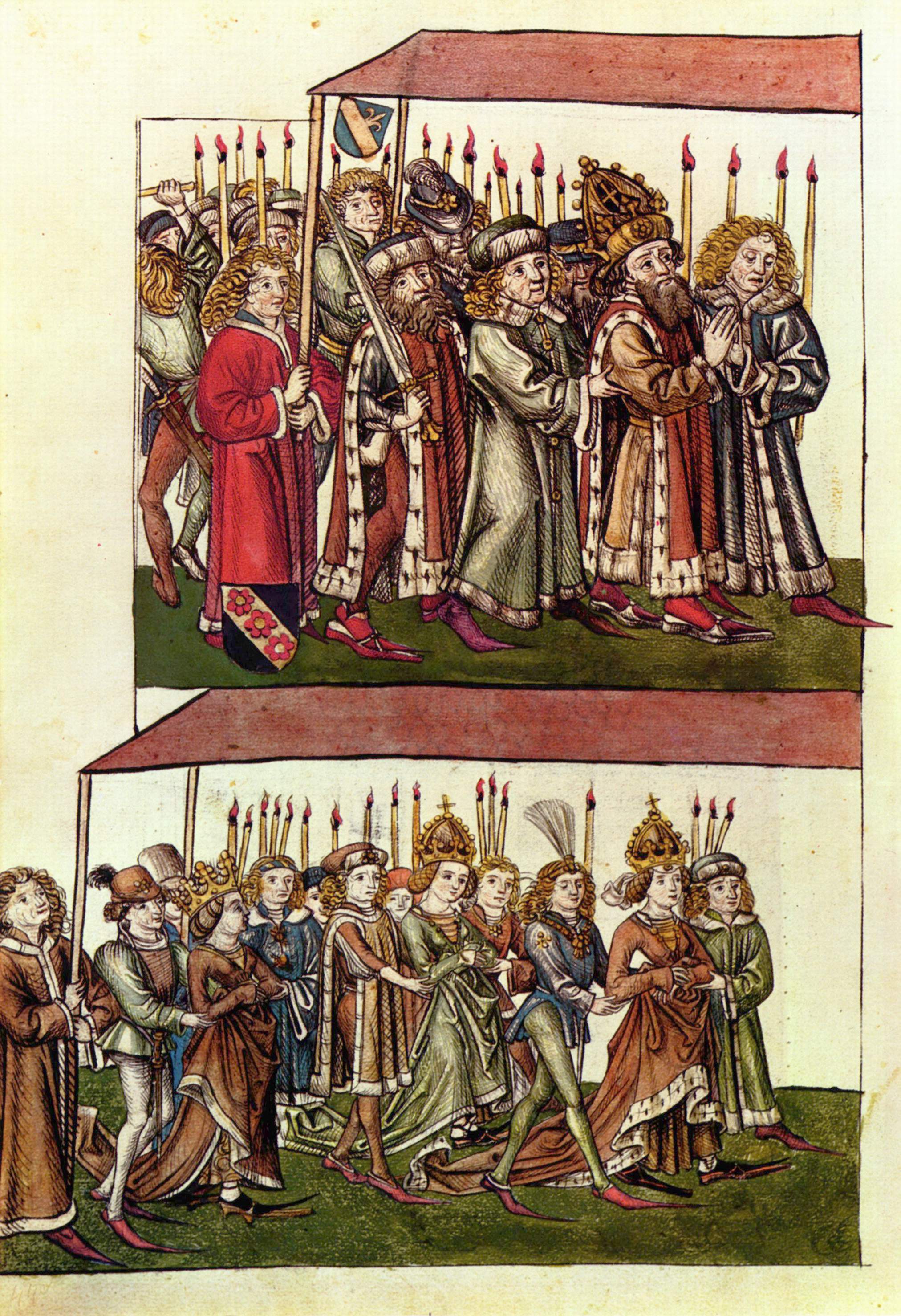|
Archbishop Of Kaunas
The Archdiocese of Kaunas ( la, Archidioecesis Kaunensis) is a Latin Church ecclesiastical territory or archdiocese of the Catholic Church in Lithuania. The episcopal see is in Kaunas, the second-largest city in Lithuania. The archdiocese's motherchurch and cathedral is Kaunas Cathedral Basilica; it is also home to a Minor Basilica in a town of Šiluva, in the region of Samogitia. History Predecessor of the diocese was established according to directions from the Council of Constance on October 24, 1417 as the Diocese of Samogitia ( pl, Żmudź; lt, Žemaitija), with a see in Medininkai. It was the second Catholic diocese in ethnic Lithuanian parts of the Grand Duchy of Lithuania. On March 25, 1798 it lost territory to establish the Diocese of Wigry. On July 3, 1848 it gained territory from the persisting then Diocese of Vilnius, now Lithuania's other Metropolitan see. On June 9, 1920 it lost territory to the existing Diocese of Riga (in Latvia), while in the next year i ... [...More Info...] [...Related Items...] OR: [Wikipedia] [Google] [Baidu] |
Kaunas Cathedral Basilica
Cathedral Basilica of apostles St. Peter and St. Paul of Kaunas ( lt, Kauno Šv. apaštalų Petro ir Povilo katedra bazilika) is a Roman Catholic cathedral basilica in Kaunas, Lithuania. History The exact date when the first Gothic style church dedicated to apostles Saint Peter and Saint Paul, was built is unknown, but it was first mentioned in written sources in 1413. The first parochial school in Kaunas at the St. Peter and St. Paul church was mentioned in 1473. The construction works were concluded only in 1624. The church greatly suffered from the 1655 military campaign and was rebuilt in 1671, gaining some Renaissance features. Only one of the towers was rebuilt after the fire of the roof in 1732. As a part of renovation, the internal decorations were funded by the King Stanisław August Poniatowski in 1771. The main altar, a lectern and a choir were installed by Tomasz Podhajski in 1775. The present-day shape of the building results from a further renovation in 1800 ... [...More Info...] [...Related Items...] OR: [Wikipedia] [Google] [Baidu] |
Mother Church
Mother church or matrice is a term depicting the Christian Church as a mother in her functions of nourishing and protecting the believer. It may also refer to the primary church of a Christian denomination or diocese, i.e. a cathedral or a metropolitan church. For a particular individual, one's mother church is the church in which one received the sacrament of baptism. The term has specific meanings within different Christian traditions. Catholics refer to the Catholic Church as "Holy Mother Church". Church as an organization Primatial local churches The "first see", or primatial see, of a regional or national church is sometimes referred to as the mother church of that nation. For example, the local Church of Armagh is the primatial see of Ireland, because it was the first established local church in that country. Similarly, Rome is the primatial see of Italy, and Baltimore of the United States, and so on. The first local church in all of Christianity is that of Jerusalem ... [...More Info...] [...Related Items...] OR: [Wikipedia] [Google] [Baidu] |
Latvia
Latvia ( or ; lv, Latvija ; ltg, Latveja; liv, Leţmō), officially the Republic of Latvia ( lv, Latvijas Republika, links=no, ltg, Latvejas Republika, links=no, liv, Leţmō Vabāmō, links=no), is a country in the Baltic region of Northern Europe. It is one of the Baltic states; and is bordered by Estonia to the north, Lithuania to the south, Russia to the east, Belarus to the southeast, and shares a maritime border with Sweden to the west. Latvia covers an area of , with a population of 1.9 million. The country has a temperate seasonal climate. Its capital and largest city is Riga. Latvians belong to the ethno-linguistic group of the Balts; and speak Latvian, one of the only two surviving Baltic languages. Russians are the most prominent minority in the country, at almost a quarter of the population. After centuries of Teutonic, Swedish, Polish-Lithuanian and Russian rule, which was mainly executed by the local Baltic German aristocracy, the independent R ... [...More Info...] [...Related Items...] OR: [Wikipedia] [Google] [Baidu] |
Roman Catholic Diocese Of Riga
The Roman Catholic Archdiocese of Riga is an archdiocese administered from the capital city of Riga in Latvia.GCatholic.org: "Metropolitan Archdiocese of Riga" retrieved January 30, 2016 retrieved January 30, 2016 retrieved January 30, 2016 Its cathedral is Svētā Jēkaba Katedrāle. It is a metropolitan archdiocese which also helps to administer three [...More Info...] [...Related Items...] OR: [Wikipedia] [Google] [Baidu] |
Roman Catholic Diocese Of Vilnius
The Roman Catholic Metropolitan Archdiocese of Vilnius ( la, Archidioecesis Vilnensis; lt, Vilniaus arkivyskupija) is an ecclesiastical territory or diocese of the Roman Catholic Church in Lithuania. Established as the Diocese of Vilnius in the 14th century, it was elevated to the rank of a metropolitan archdiocese by Pope Pius XI on October 28, 1925. It has two suffragan sees of Kaišiadorys and Panevėžys. The archdiocese's motherchurch and thus seat of its archbishop is Cathedral-Basilica of St. Stanislaus and St. Ladislaus in Vilnius; it also houses a minor basilica in Trakai. The current archbishop of Vilnius is Gintaras Grušas. He is assisted by auxiliary bishops Arūnas Poniškaitis and Darius Trijonis. History Establishment The Archdiocese owes its foundation to Jogaila, who Christened Lithuania in 1387 and sent Dobrogost, Bishop of Poznań as ambassador to the Pope Urban VI with a petition for the erection of an episcopal see at Vilnius and the appointment of ... [...More Info...] [...Related Items...] OR: [Wikipedia] [Google] [Baidu] |
Roman Catholic Diocese Of Wigry
Roman or Romans most often refers to: *Rome, the capital city of Italy *Ancient Rome, Roman civilization from 8th century BC to 5th century AD *Roman people, the people of ancient Rome *''Epistle to the Romans'', shortened to ''Romans'', a letter in the New Testament of the Christian Bible Roman or Romans may also refer to: Arts and entertainment Music * Romans (band), a Japanese pop group * ''Roman'' (album), by Sound Horizon, 2006 * ''Roman'' (EP), by Teen Top, 2011 *" Roman (My Dear Boy)", a 2004 single by Morning Musume Film and television *Film Roman, an American animation studio * ''Roman'' (film), a 2006 American suspense-horror film * ''Romans'' (2013 film), an Indian Malayalam comedy film * ''Romans'' (2017 film), a British drama film * ''The Romans'' (''Doctor Who''), a serial in British TV series People *Roman (given name), a given name, including a list of people and fictional characters *Roman (surname), including a list of people named Roman or Romans *Ῥωμα� ... [...More Info...] [...Related Items...] OR: [Wikipedia] [Google] [Baidu] |
Grand Duchy Of Lithuania
The Grand Duchy of Lithuania was a European state that existed from the 13th century to 1795, when the territory was partitioned among the Russian Empire, the Kingdom of Prussia, and the Habsburg Empire of Austria. The state was founded by Lithuanians, who were at the time a polytheistic nation born from several united Baltic tribes from Aukštaitija. The Grand Duchy expanded to include large portions of the former Kievan Rus' and other neighbouring states, including what is now Lithuania, Belarus and parts of Ukraine, Latvia, Poland, Russia and Moldova. At its greatest extent, in the 15th century, it was the largest state in Europe. It was a multi-ethnic and multiconfessional state, with great diversity in languages, religion, and cultural heritage. The consolidation of the Lithuanian lands began in the late 13th century. Mindaugas, the first ruler of the Grand Duchy, was crowned as Catholic King of Lithuania in 1253. The pagan state was targeted in a religious crusade by ... [...More Info...] [...Related Items...] OR: [Wikipedia] [Google] [Baidu] |
Ethnic Lithuanians
Lithuanians ( lt, lietuviai) are a Baltic ethnic group. They are native to Lithuania, where they number around 2,378,118 people. Another million or two make up the Lithuanian diaspora, largely found in countries such as the United States, United Kingdom, Brazil, Russia, and Canada. Their native language is Lithuanian, one of only two surviving members of the Baltic language family along with Latvian. According to the census conducted in 2021, 84.6% of the population of Lithuania identified themselves as Lithuanians, 6.5% as Poles, 5.0% as Russians, 1.0% as Belarusians, and 1.1% as members of other ethnic groups. Most Lithuanians belong to the Catholic Church, while the Lietuvininkai who lived in the northern part of East Prussia prior to World War II, were mostly Lutherans. History The territory of the Balts, including modern Lithuania, was once inhabited by several Baltic tribal entities ( Aukštaitians, Sudovians, Old Lithuanians, Curonians, Semigallians, Selonians, Samo ... [...More Info...] [...Related Items...] OR: [Wikipedia] [Google] [Baidu] |
Varniai
Varniai (; Samogitian language, Samogitian: ''Varnē''; pl, Wornie) is a city in the Telšiai County, western Lithuania. In the Middle Ages the city was known as Medininkai (Samogitian language, Samogitian: ''Medėninkā''). It was established in the 14th century, on the bank of the Varnelė River, near an important Samogitian castle. It was the center of Samogitian Catholic church: after the baptism of Samogitia, the Samogitian Bishop resided in the town. Around 1414–1416 the first church was built, and c. 1464 the first cathedral. Varniai was the center of Samogitian episcopate until the middle of the 19th century, when authorities of the Russian Empire moved it to Kaunas. With support of Merkelis Giedraitis, Mikalojus Daukša translated and made ready for publication ''Catechism of Mikalojus Daukša, Katechizmas'', the first Lithuanian language book printed in the Grand Duchy of Lithuania, then part of the Polish–Lithuanian Commonwealth. It was also residence of Motiej ... [...More Info...] [...Related Items...] OR: [Wikipedia] [Google] [Baidu] |
Council Of Constance
The Council of Constance was a 15th-century ecumenical council recognized by the Catholic Church, held from 1414 to 1418 in the Bishopric of Constance in present-day Germany. The council ended the Western Schism by deposing or accepting the resignation of the remaining papal claimants and by electing Pope Martin V. It was the last papal election to take place outside of Italy. The council also condemned Jan Hus as a heretic and facilitated his execution by the civil authority, and ruled on issues of national sovereignty, the rights of pagans and just war, in response to a conflict between the Grand Duchy of Lithuania, Kingdom of Poland and the Order of the Teutonic Knights. The council is also important for its relationship to ecclesial conciliarism and Papal supremacy. The council's decrees were formally annulled by Pope Sixtus IV in 1478. Origin and background The council's main purpose was to end the Papal schism which had resulted from the confusion following the Avig ... [...More Info...] [...Related Items...] OR: [Wikipedia] [Google] [Baidu] |
Samogitia
Samogitia or Žemaitija ( Samogitian: ''Žemaitėjė''; see below for alternative and historical names) is one of the five cultural regions of Lithuania and formerly one of the two core administrative divisions of the Grand Duchy of Lithuania alongside Lithuania proper. Žemaitija is located in northwestern Lithuania. Its largest city is Šiauliai. Žemaitija has a long and distinct cultural history, reflected in the existence of the Samogitian language. Etymology and alternative names Ruthenian sources mentioned the region as жемотьская земля, ''Žemot'skaja zemlja''; this gave rise to its Polish form, , and probably to the Middle High German . In Latin texts, the name is usually written as etc. The area has long been known to its residents and to other Lithuanians exclusively as Žemaitija (the name Samogitia is no longer in use within Lithuania and has not been used for at least two centuries); Žemaitija means "lowlands" in Lithuanian. The region is also ... [...More Info...] [...Related Items...] OR: [Wikipedia] [Google] [Baidu] |




